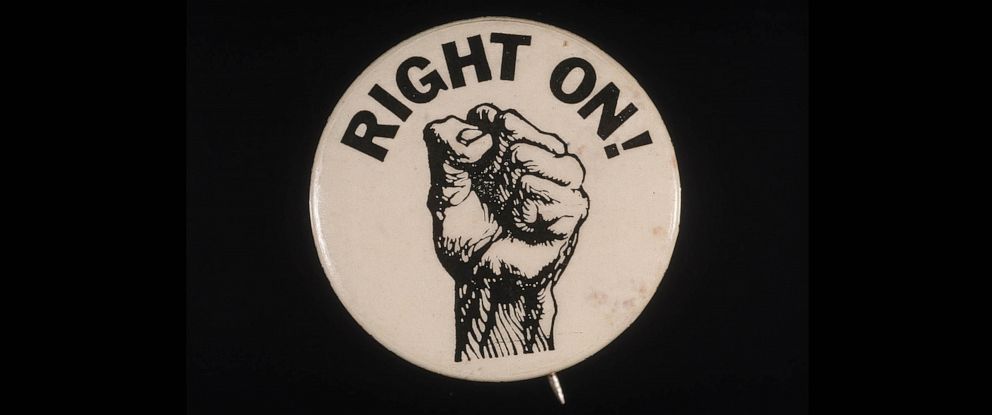Before Black Lives Matter: Black justice slogans, symbols dating back to the 1700s
Centuries before BLM, there were civil rights slogans and symbols.
#BlackLivesMatter, #TakeAKnee. Slogans, symbols and emblems have proven to have the power to fuel social progress and advance the fight for equality.
Presently, social justice movements take shape within a digital landscape. Hashtags, viral videos and online petitions all contribute to getting messages out in seconds to millions of people.
In centuries past, it was a much different story. Ceramics, glassware, metal and paper were the primary ways to mass produce any sort of messaging about a social movement.
Slogans, emblems and symbols help reduce justice movements to "its most basic part," said Bonnie Siegler, a New York-based graphic designer and author of "Signs of Resistance: A Visual History of Protest in America."
Siegler said graphical representation is also one of the most "beautiful ways" to deliver messaging about a movement and that there is indeed precedence before Black Lives Matters. "'I Am a Man' -- from the Memphis sanitation march [in 1968] -- that was essentially saying Black lives matter," said Siegler.
"And then 200 years earlier, the abolition symbol, 'Am I not a man and brother?,' all the same sentiment. And now we've been able to reduce it to just three words. And that gives us all something to gather round without it being an essay or a book," she said.
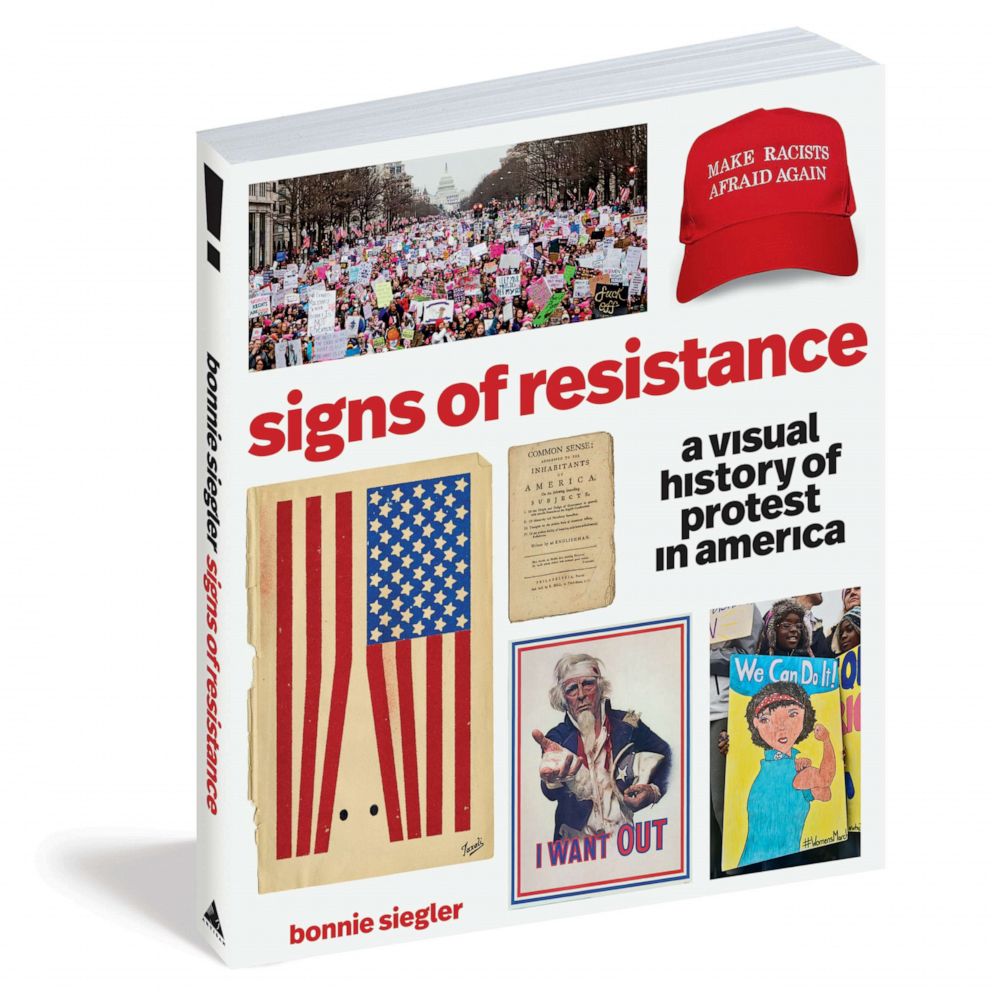
Siegler said one of the reasons she wrote her book was to let designers know the power of their graphics to represent and fuel social movements.
"The thing about graphic designers throughout history … [is] people's conscience has been the client. And that's really powerful. [The Vietnam War] was a time when artists and designers really stepped up."
Siegler said that there are images and symbols representing social change that stand out for her. One was a flag with the words "A Man Was Lynched Yesterday" raised in front of the NAACP office in New York City between 1920 and 1938. They would hoist the flag every time a person, usually African American, was lynched.
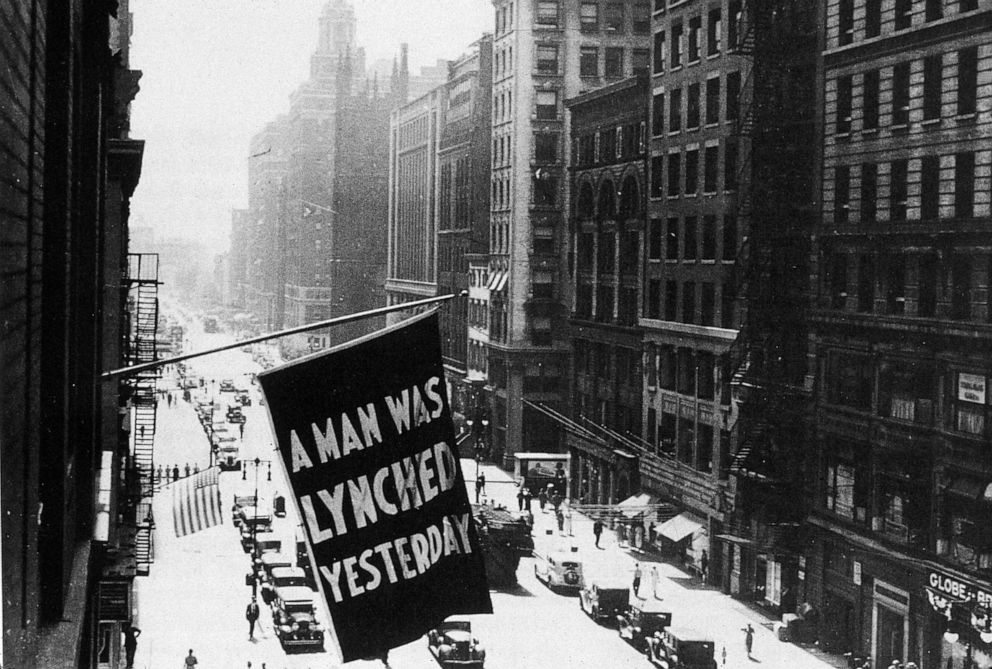
Another example of an image that Siegler believes helped change the country's feelings about the Vietnam War was a poster featuring a photograph of the My Lai massacre.
"Just dead bodies. It's incredibly difficult to look at," she said.
Centuries before BLM, there were civil rights slogans and symbols, handcrafted and delivered to the masses, to educate about injustice and inequality.
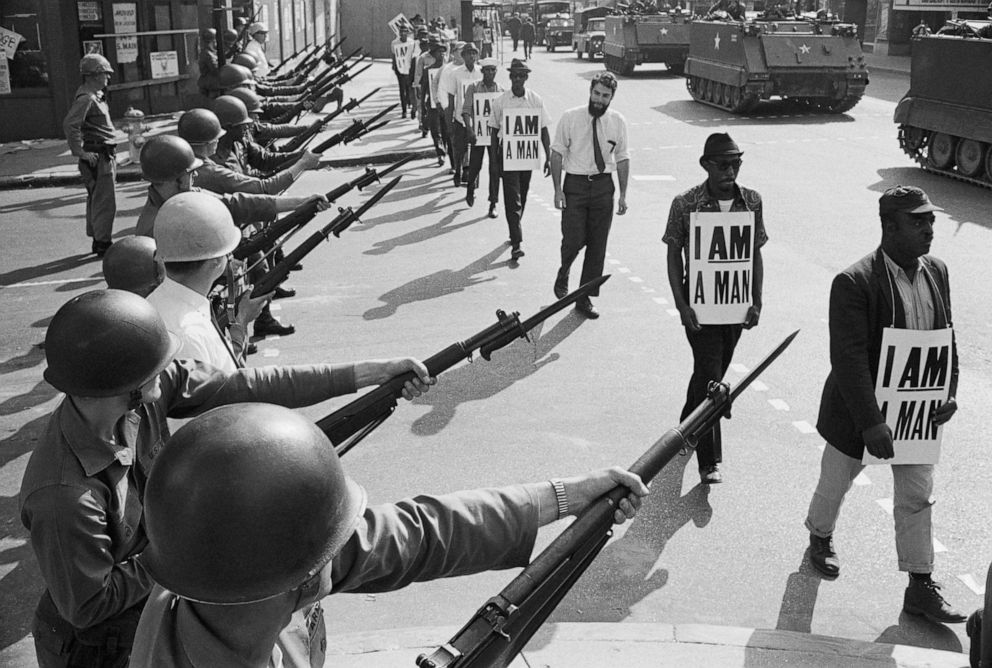
Wedgwood's "Am I Not A Man And A Brother?" medallion
The brand Wedgwood is synonymous with fine china dinnerware (full sets of Wedgwood dishware can sell for upwards of thousands of dollars). But some may not know that that the founder, Josiah Wedgwood, who started the company in 1759, was one of the first abolitionists who fought for the end of the slave trade.
In 1787, Wedgwood was already a famous potter. His artistry in crafting intricate ceramics had earned him the title of "Potter to Her Majesty," in 1766 after he created earthenware for England's Queen Charlotte.
But Wedgwood, who was also the grandfather of evolutionist Charles Darwin, had another calling -- seeing the end of the enslavement of African people. In 1787, Wedgwood engaged a sculptor and modeler to create a medallion made of Jasper featuring a cameo of an enslaved man with his wrists in manacles. Above the man was the inscription: "AM I NOT A MAN, AND A BROTHER?"
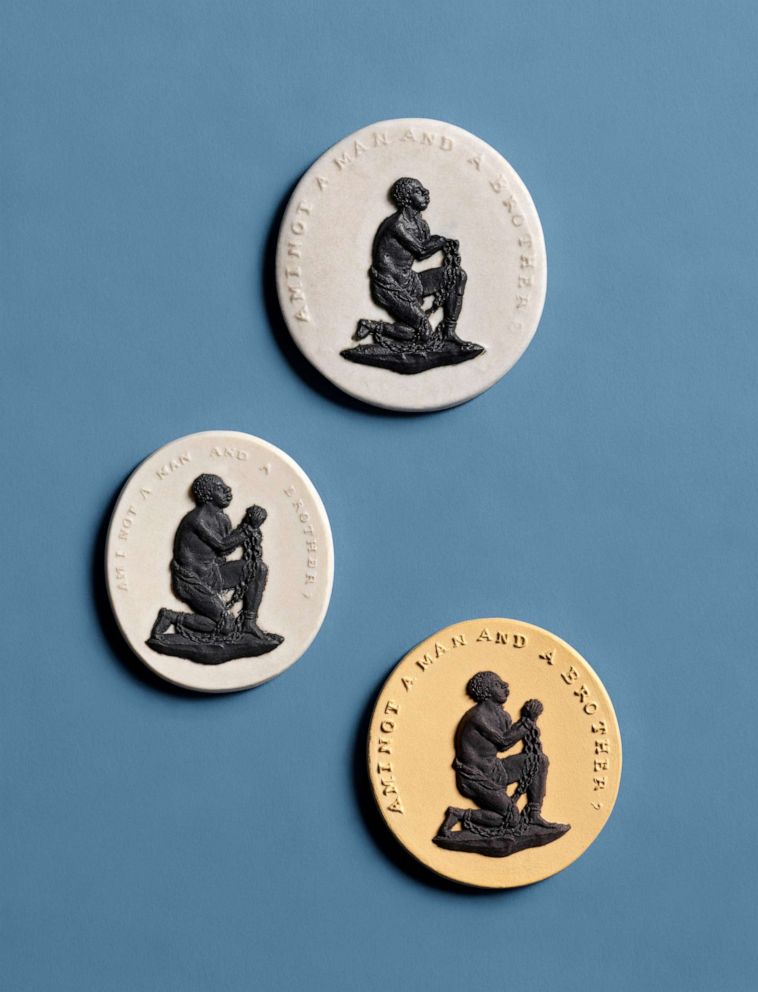
"The distribution and circulation of these medallions is very central to the whole ethos of the movement for the abolition of slavery," wrote Gaye Blake-Roberts, historian and archivist for the Wedgwood company, in a research document.
One recipient of the Jasper medallion was Benjamin Franklin, who had become actively involved in the abolitionist movement in his later years. In 1788, Wedgwood sent Franklin (at the time the head of the Pennsylvania Society for the Abolition of Slavery), a packet of medallions and wrote, "I ardently hope for the completion of our wishes."
"I am persuaded [the medallion] may have an Effect equal to that of the best written Pamphlet in procuring favour to those oppressed people," Franklin wrote to Wedgwood, according to the Smithsonian Natural Museum of American History's website.
The medallions became fashionable throughout England. "Some had them inlaid in gold on the lid of their snuff-boxes. Of the ladies, several wore them in bracelets and others had them fitted up in an ornamental manner as pins for their hair. At length the taste for wearing them became general, and thus a fashion … was seen for once in the honourable office of promoting the cause of justice, humanity and freedom," wrote Thomas Clarkson, another abolitionist and a Wedgwood contemporary.
East India "Not Made by Slaves" sugar bowl
In what may have marked the beginnings of conscious consumerism, sugar bowls bearing a logo of a kneeling enslaved person and the motto "East India Sugar, not made by slaves," were promoted and endorsed in 1824 by the British-based Anti-Slavery Society.
Much of England's slave trade activity was connected to sugar manufacturing. These bowls helped make the link between the sugar industry and slavery widespread in English society, according to Clare Midgley in her book, "Feminism and Empire: Women Activists in Imperial Britain, 1790–1865."
Establishing that helped propel the anti-slavery movement throughout Britain.
The slogan was also printed and distributed on pamphlets. An estimated 300,000 people abandoned sugar as a result, according to the BBC.
"Whipped Peter" photo
Before videos, there were photos. And right around the Civil War in the United States, photography became available to bear witness to the horrors of slavery.
One of the most famous images is that of "Whipped Peter," also referred to as "The Scourged Back," taken in 1863. The photo shows a former slave's back covered in crisscrosses of ugly, raised scars with the caption, "Overseer Artayou Carrier whipped me. I was two months in bed sore from the whipping. My master come after I was whipped; he discharged the overseer. The very words of poor Peter, taken as he sat for his picture. Baton Rouge, Louisiana."
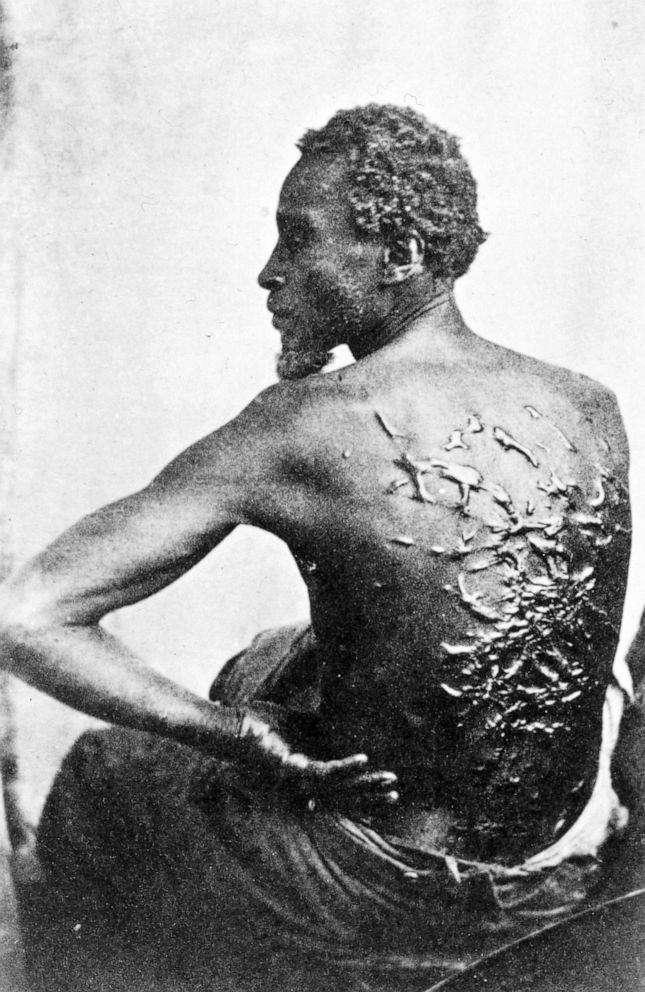
"Peter," who is also referred to as "Gordon" in some historical documents, was an enslaved person who escaped from a Louisiana plantation to a Union army camp in Baton Rouge.
The photo was one of the earliest instances of an image going viral and gave many who would otherwise have never known, a look at the brutality of slavery. Perhaps not until the image of Emmett Till's mutilated corpse was published in The Chicago Defender and Jet magazine almost a century later in 1955 after the 14-year old Till was brutally murdered by two white men, did an image have so much influence in the quest for justice and equality for Black people.
Civil Rights pins
While political lapel pins date back to the Revolutionary War, it wasn't until the presidential elections of 1840-1860 that pins were mass-produced due to the availability of cheap labor and materials.
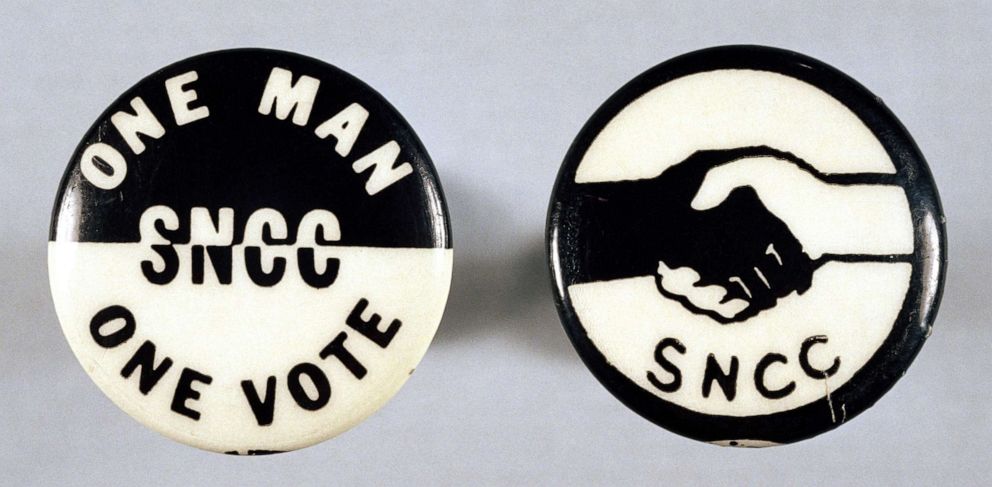
In the 1960s, the major civil rights groups at the time used pins to promote their messaging. The Southern Christian Leadership Conference, Congress for Racial Equality, the NAACP and Student Non-Violent Coordinating Committee all created pins featuring slogans or the names of the organizations.
Cheap and easy to make, some pins delivered powerful messages with simple images and words. A pin with only the words, "We Shall Overcome," was one of the most popular of the period as was the SNCC's image of a black hand shaking a white hand.
